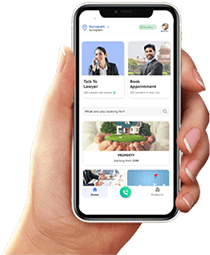Unauthorized Bank Transaction? Here’s How to Get Your Money Back Quickly!
Introduction
The digital era has revolutionized the way we conduct financial transactions. With just a few taps on a smartphone or clicks on a computer, payments for services, goods, and travel can be made instantly. While this convenience is unparalleled, it has also given rise to an increase in unauthorized transactions and online frauds.
Unauthorized bank transactions can be distressing, but if you act swiftly and take the right steps, you can recover your money. This guide will help you understand the types of online financial fraud, the responsibilities of banks and customers, and the legal steps to take when faced with an unauthorized transaction.
Common Types of Online Financial Fraud
Understanding how fraudsters operate can help you safeguard your financial assets. Here are some of the most common online financial frauds:
1. Sharing One-Time Passwords (OTPs)
One of the easiest ways fraudsters gain access to your money is by tricking you into sharing OTPs. Banks send OTPs to verify transactions, and giving them away to unauthorized persons can result in immediate financial loss.
Precaution: Never share OTPs over the phone or email, even if the caller claims to be a bank representative.
2. ATM Cloning
Fraudsters can clone your ATM card by capturing card details through skimming devices attached to ATMs or card payment terminals.
Precaution: Always use secure ATMs, cover your PIN while entering it, and regularly monitor your bank transactions.
3. Hacking
Hackers can gain unauthorized access to your bank account by exploiting security vulnerabilities in your device or banking apps.
Precaution: Use strong passwords, enable two-factor authentication, and avoid accessing banking services on public Wi-Fi networks.
4. Identity Theft
Fraudsters may steal your personal information and use it to open bank accounts or conduct transactions in your name.
Precaution: Do not share sensitive details like your PAN card, Aadhaar card, or banking credentials with unknown sources.
5. Mobile Fraud (Smishing)
Smishing involves receiving fake text messages claiming your account has been blocked or requires verification. These messages often contain links to fraudulent websites.
Precaution: Avoid clicking on links from unknown numbers and verify directly with your bank.
6. Phishing and Fraudulent Emails
Phishing emails pose as legitimate institutions asking for personal or banking details.
Precaution: Always check the sender's email address and avoid downloading attachments from unknown sources.
7. Malware and Viruses
Cybercriminals use malware to steal banking credentials without the user's knowledge.
Precaution: Install reliable antivirus software and avoid downloading software from untrusted sources.
Who is Responsible for Unauthorized Transactions?
Liability for unauthorized transactions depends on how and when the fraud was reported. Here's how responsibility is determined:
-
If the customer shares payment credentials (e.g., OTP, PIN), they bear the entire loss until they report the unauthorized transaction.
-
If the fraud is due to negligence or security lapses by the bank, the bank is fully liable.
-
If the fraud results from a third-party breach and is reported within a reasonable time, the bank is responsible for reimbursing the loss.
How Liability Changes Based on Reporting Time
| Time of Reporting Fraud | Customer Liability |
|---|---|
| Within 3 working days | Zero liability |
| Between 4-7 working days | Limited liability (varies based on account type) |
| After 7 working days | Liability determined by the bank's policy |
What to Do If You Are a Victim of Bank Fraud
Step 1: Notify the Bank Immediately
As soon as you notice an unauthorized transaction, inform your bank. Most banks provide 24x7 fraud reporting channels such as:
-
Customer care helpline
-
SMS reporting
-
Online complaint portal
-
Email support
The quicker you report, the higher the chance of recovering your money.
Step 2: Block Your Card or Banking Access
Request the bank to block your debit/credit card or internet banking access to prevent further fraudulent activity.
Step 3: File a Police Complaint
For online fraud, lodge a complaint with the nearest Cyber Cell police station. For ATM-related frauds, file a report with the local police station.
Helpline for Cyber Frauds: 8691960000
Online Complaint Portal: sachet.rbi.org.in
Step 4: Keep a Record of All Communication
Maintain records of all correspondence with your bank, police, and relevant authorities, including complaint numbers and email confirmations.
Step 5: Follow Up with the Bank Regularly
Banks are required to resolve fraud complaints within 90 days. Keep following up to ensure that your case is being actively handled.
Precautionary Measures for Customers
-
Never share banking credentials: OTPs, PINs, and passwords should never be shared.
-
Regularly monitor your account: Check transaction history for unauthorized activities.
-
Use secure internet connections: Avoid banking on public Wi-Fi networks.
-
Enable security alerts: Set up SMS/email notifications for transactions.
-
Use strong passwords: Create complex passwords and update them regularly.
-
Be cautious of unknown calls/messages: Verify with the bank before taking any action on suspicious communication.
-
Secure devices: Install trusted antivirus software and update apps regularly.
-
Disable international transactions: If not required, turn off international usage for your cards.
Responsibilities of Banks in Fraud Cases
-
Provide 24x7 fraud reporting channels.
-
Acknowledge complaints with a unique reference number.
-
Take immediate steps to block fraudulent transactions.
-
Investigate and resolve fraud complaints within 90 days.
-
Educate customers about digital security practices.
Conclusion
With the rapid growth of digital transactions, unauthorized bank fraud has become a pressing concern. However, by staying alert, taking preventive measures, and acting promptly when fraud occurs, customers can minimize financial losses. Banks also play a crucial role in safeguarding accounts and ensuring a swift resolution in case of unauthorized transactions.
By following the steps outlined in this guide, you can protect yourself from financial fraud and take swift action to recover lost money. Remember, awareness and quick response are key to mitigating risks associated with digital banking fraud.
